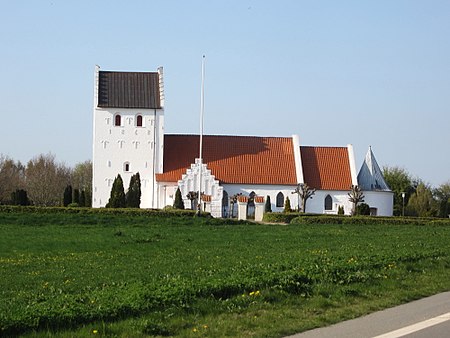Taulov

Taulov is a town located in Fredericia Municipality in the eastern part of the Jutland peninsula in Denmark. The town is, with a population of 3,513 (1 January 2023), the second largest in the municipality.Taulov's history is not that well known and it was nothing more than a village until the first railroads in Jutland were built in the 1860s during the industrial revolution. It is now divided into Gammel Taulov (Old Taulov) and Taulov by the motorway, despite Taulov Church being located in Taulov. Old Taulov grew up around the train station and the new main street while the majority of Taulov is squeezed in between the E20 motorway and Kolding Landevej, the old main road between Kolding and Snoghøj, which was the main way to access Eastern Denmark for many centuries. Taulov Church is a medieval church in traditional Danish style, and was constructed in the 13th century. It functioned as a seamark for sailors on Kolding Fjord and Little Belt until modern navigation was introduced. As the natural centre of Taulov, it is located approximate 9 km (5.6 mi) from Fredericia, 10 km (6.2 mi) from Kolding and 20 km (12 mi) from Vejle.
Excerpt from the Wikipedia article Taulov (License: CC BY-SA 3.0, Authors, Images).Taulov
Taulov Kirkevej, Fredericia Municipality
Geographical coordinates (GPS) Address Nearby Places Show on map
Geographical coordinates (GPS)
| Latitude | Longitude |
|---|---|
| N 55.540555555556 ° | E 9.6111111111111 ° |
Address
Taulov Kirkevej 40
7000 Fredericia Municipality
Region of Southern Denmark, Denmark
Open on Google Maps







